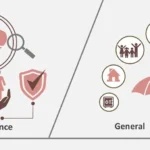Table of Contents
ToggleA Subsidized Plan To A Self-Pay Plan
This article will give you a step-by-step guide on how to switch from a subsidized plan to a self-pay plan in the UK. Many people are looking for ways to reduce their monthly expenses and switching from a subsidized plan to a self-pay plan is one of the best ways of doing so.
Switching from a subsidized plan to a self-pay plan is not an easy decision. There are many reasons to switch from one plan to the other, but it can be difficult to know how much you should expect your employer or health insurer to pay for your health insurance.
The first step in switching plans is understanding what type of plan you are currently on and how much it costs. The second step is calculating the cost of switching plans and finding out if it will be cheaper than staying on your current plan.
It can be difficult to calculate the cost of switching plans without knowing the details about your current plan, so we made this guide that will help you figure out what kind of plan you are on and how much it costs so that you have a better idea of what switching plans will cost.
What is the Difference between a Subsidized and Self-Pay Plan?
The UK has a subsidized health care system where the government pays for most people’s medical bills.In the UK, you can choose between a self-pay plan and a subsidized plan. A self-pay plan is when you pay for all your medical bills yourself, whereas a subsidized plan is when the government pays for some of your medical bills.
The difference between a subsidized and self-pay plan is that the former is typically less expensive than the latter.
If you are offered a subsidized plan, it’s important to understand what the terms of your employer’s offer mean. You should also be aware that if you leave your job before your policy comes into effect, you may not be able to get affordable health insurance else where. A self-pay plan means you pay 100% of your healthcare cost, including premiums, deductibles, and coinsurance.
How Do You Find Your Next Payment on a Self-Pay Plan and How Much Will it Cost?
There are various factors that affect the price of a self-pay plan, and it is difficult to get an estimate without knowing what those factors are.
There are some ways to find out how much your self-pay plan will cost you. You can ask the hospital or doctor what their prices are and make sure they provide a range of prices for different services. You can also call your insurance company or check its website for information on costs.
If you have no idea how much your self-pay plan will cost, then you should talk to your doctor about this before buying one. They will be able to give you an estimate based on your health condition and needs, as well as any other factors that may affect the price such as whether or not you have any pre-existing conditions that could require more care in the future.
There are many payment plans to choose from when you’re self-paying for your healthcare. Some of these include:
- A lump sum payment
- A monthly payment
- A fixed amount per day
- A fixed amount per week
- A fixed amount per month
What Are the Benefits of Switching from a Subsidized Plan to a Self-Pay Plan?
Switching from a subsidized plan to a self-pay plan is the best option for people who want to save money.The benefits of switching from a subsidized plan are numerous. You will be able to save money by not paying for the expensive premiums that come with these plans, and you won’t have to worry about the deductibles and co-pays of these plans.
The most important benefit of switching is that you can choose your own deductible and co-pay amount, which means that you can decide how much you are willing to spend on your health care. Moreover, you can save more money on your monthly bill and continue using your current phone number without having to change it.
It also allows patients to choose how much they want to pay, which can be based on affordability or their own personal health needs. It also allows doctors and nurses more time with their patients, while ensuring they have enough money set aside for emergencies without having to worry about getting paid back by insurers.
















